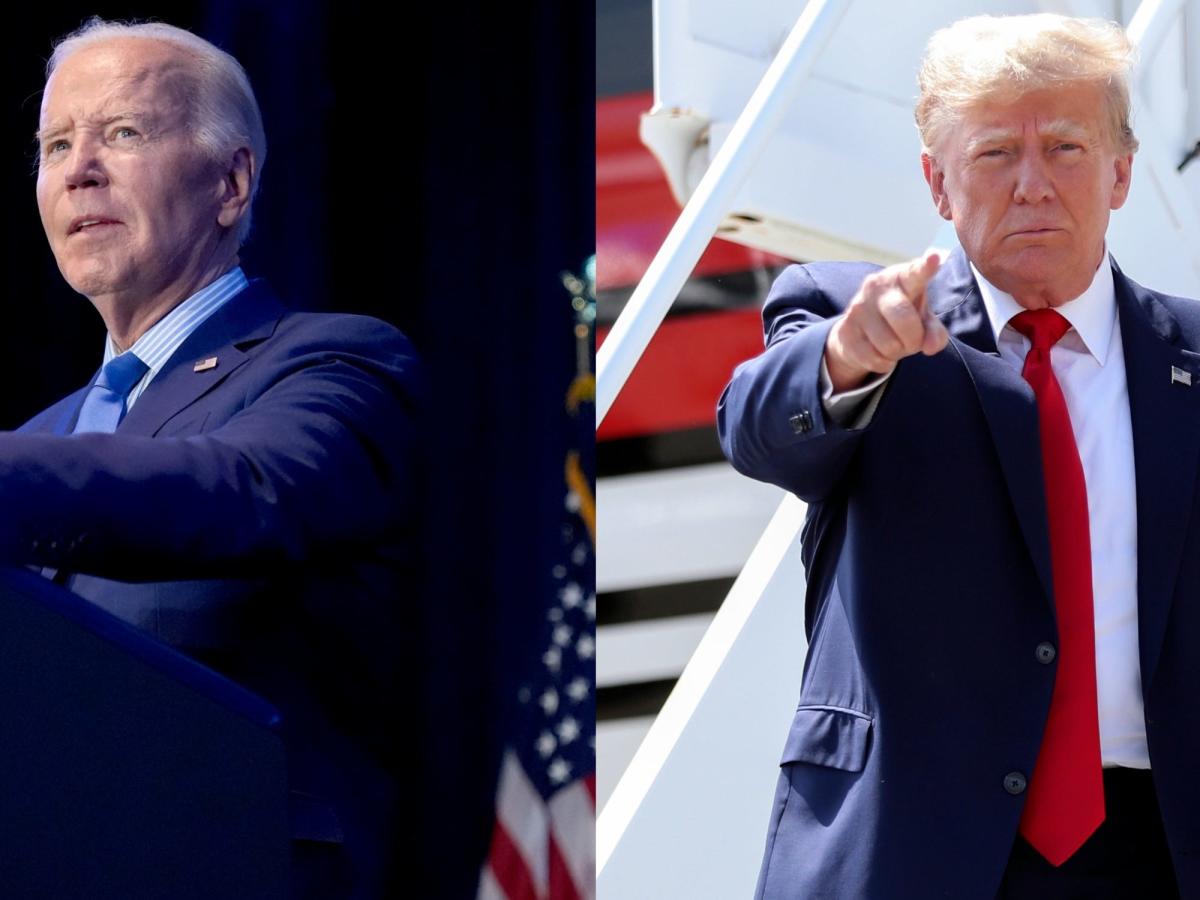-
Climate change has become one of the more polarizing issues to divide Americans in recent years.
-
Biden and Trump have completely different approaches to dealing with climate issues.
-
Biden has tried to issue stricter rules. Trump largely has an ear for oil and gas interests.
For millions of Americans, nothing is more important than the well-being of the environment.
From protecting lakes and streams to the fight to curb greenhouse gas emissions, many voters in the upcoming U.S. presidential election want the federal government to take an active role in climate issues.
But some voters also oppose stronger federal oversight of the environment, arguing that the economic benefits of more oil drilling are critical — while also rejecting global agreements on climate change as harmful to the country’s autonomy.
However, one thing is clear: the lion’s share of voters believe climate change is real.
The latest quarterly survey from the Yale Program on Climate Change Communication found that 72% of Americans believed climate change was happening, while only 15% disagreed. That same survey found that 58% of Americans believed global warming was caused by humans, while 29% believed it was a natural phenomenon.
And divergent views on the cause of climate change have hardened political divisions in recent years, with Democrats largely pushing for more protections while the Republican Party has been more receptive to energy interests that have largely opposed such rules.
Here’s a look at President Joe Biden and former President Donald Trump’s positions on climate — which will become a defining issue for Gen Z and millennial voters this fall.
Where Joe Biden stands on the climate
Biden has tried to position himself as one of the most environmentally friendly presidents in American history, following in the footsteps of his former boss, President Barack Obama.
Under Obama, the US joined the Paris Agreement, an international treaty aimed at significantly reducing greenhouse gas emissions. But President Donald Trump withdrew from the plan while in office, calling it harmful to the U.S. economy.
On the same day as his inauguration in January 2021, Biden rejoined the Paris climate agreementThis brings the country back into line with almost 200 countries that pledged to reduce greenhouse gas emissions.
That same day, Biden also revoked a key presidential permit for the Keystone XL oil pipeline, a project championed by Trump but opposed by many Democrats, environmental groups and a slew of Native American communities.
In September 2023, Biden canceled seven Trump-era oil and gas leases in the Alaska National Wildlife Refuge (ANWR), which includes some of the country’s most pristine areas.
Biden also implemented new Environmental Protection Agency (EPA) rules that will limit tailpipe emissions from future trucks and passenger vehicles and strengthen reporting requirements for methane emissions from oil and natural gas operations.
Where Donald Trump stands on the climate
Trump’s fervent opposition to the Paris Agreement is well known.
During his first term, he rolled back major environmental protections, opening up land to logging and even weakening efficiency standards for dishwashers and light bulbs.
In April 2024, Trump proposed to a group of wealthy oil executives gathered at Mar-a-Lago that they collectively raise $1 billion to help him win a second term and thus dismantle the regulations they oppose, according to The Washington Post. According to the newspaper, Trump then stated that such an amount would amount to a “deal” as the executives would avoid stricter rules in his Oval Office.
Trump has also spoken out against Biden’s strong support for electric vehicles, arguing that their ramped-up production will hurt the economy. The ex-president hopes such a message will gain traction in places like Michigan — the battleground state in the Midwest where he hopes to upset the incumbent president in November.
The Project 2025 proposal, which outlines what Trump would do at the start of a second term, outlines the approach his administration would likely take on oil and gas production — which the former president strongly advocated during his time in office.
Two of the goals of a Trump-led Department of Energy: “Unleash energy innovation in the private sector by ending government interference in energy decisions” and “End the war on oil and natural gas.”
Read the original article on Business Insider
